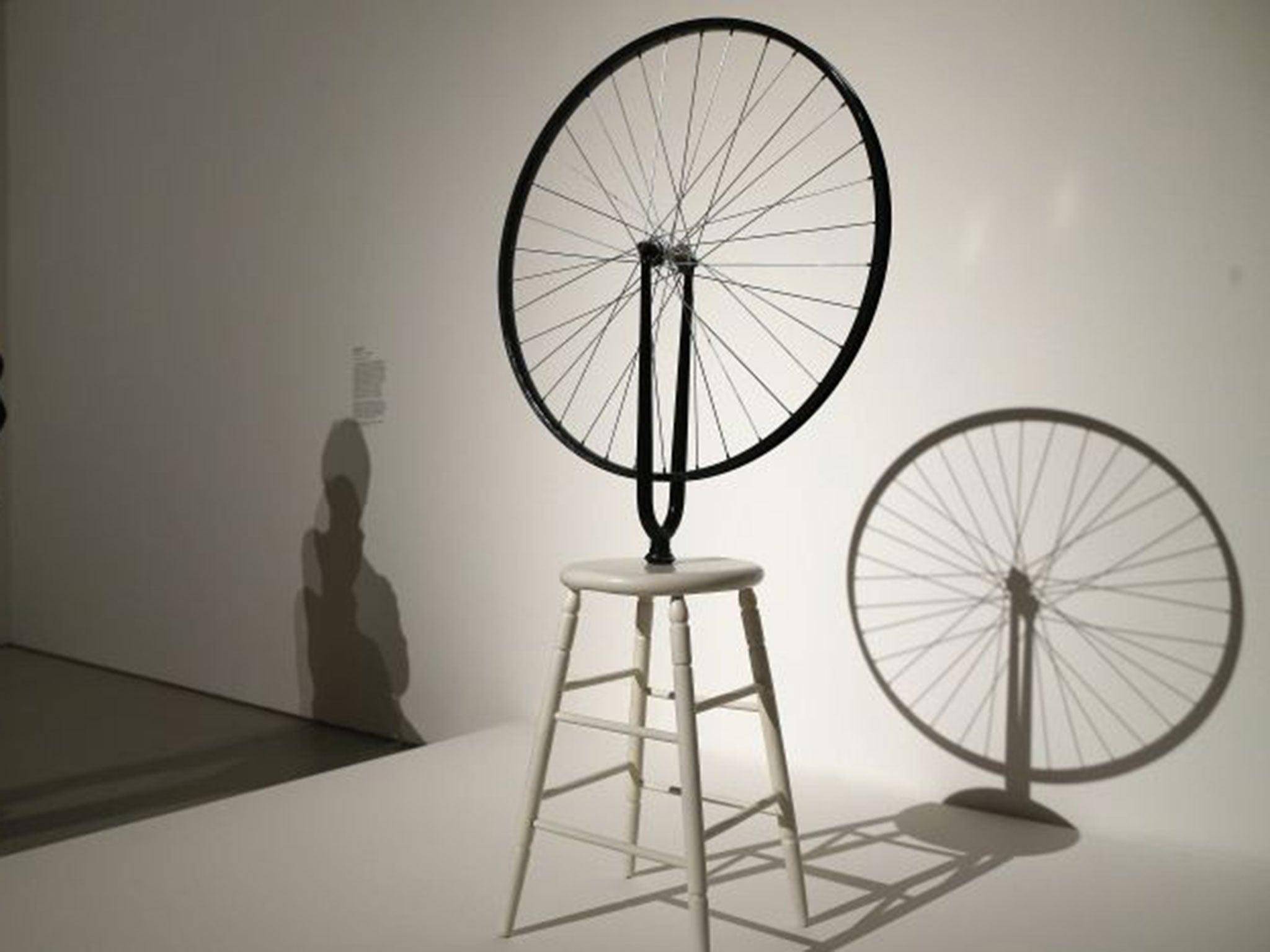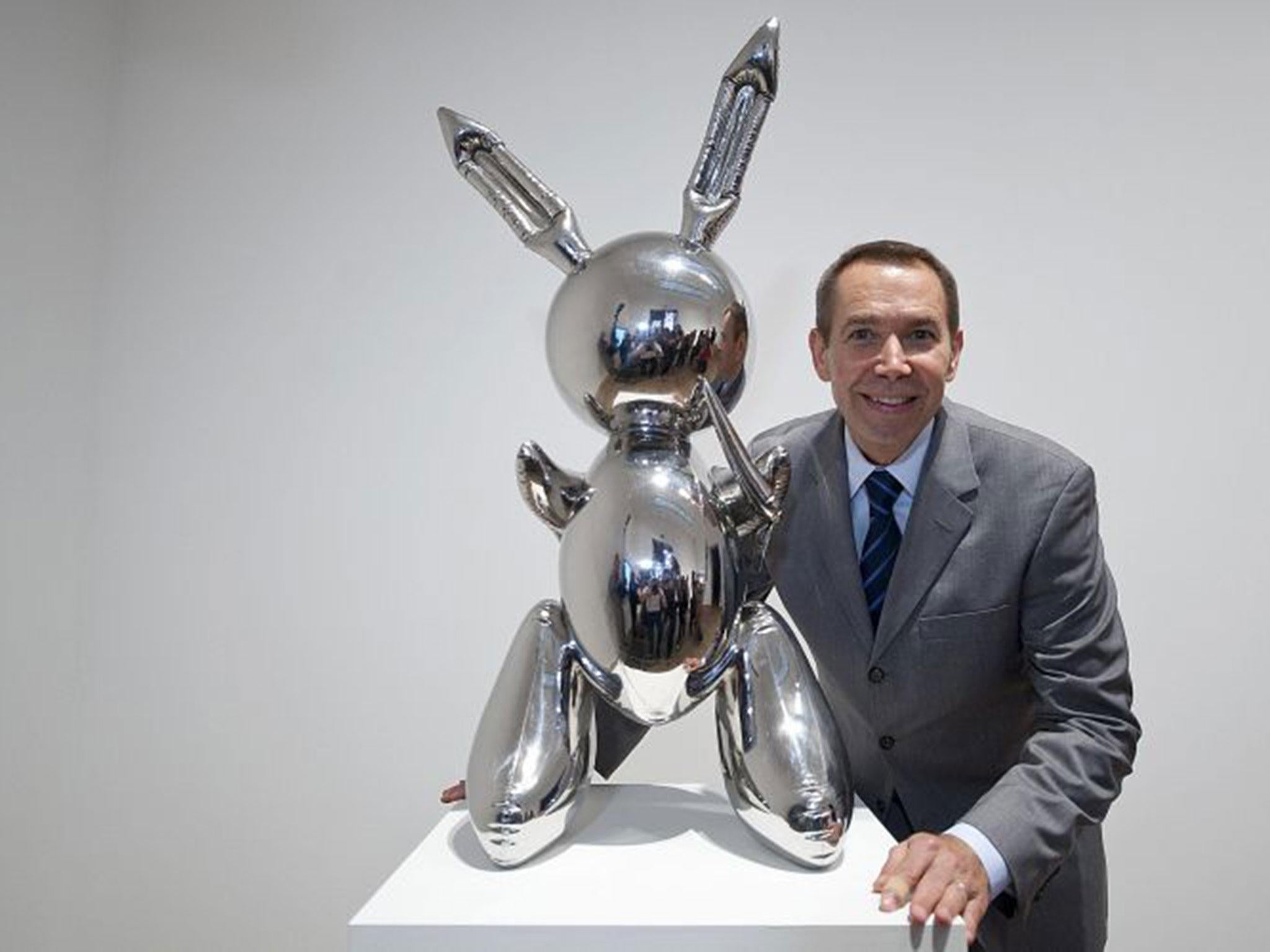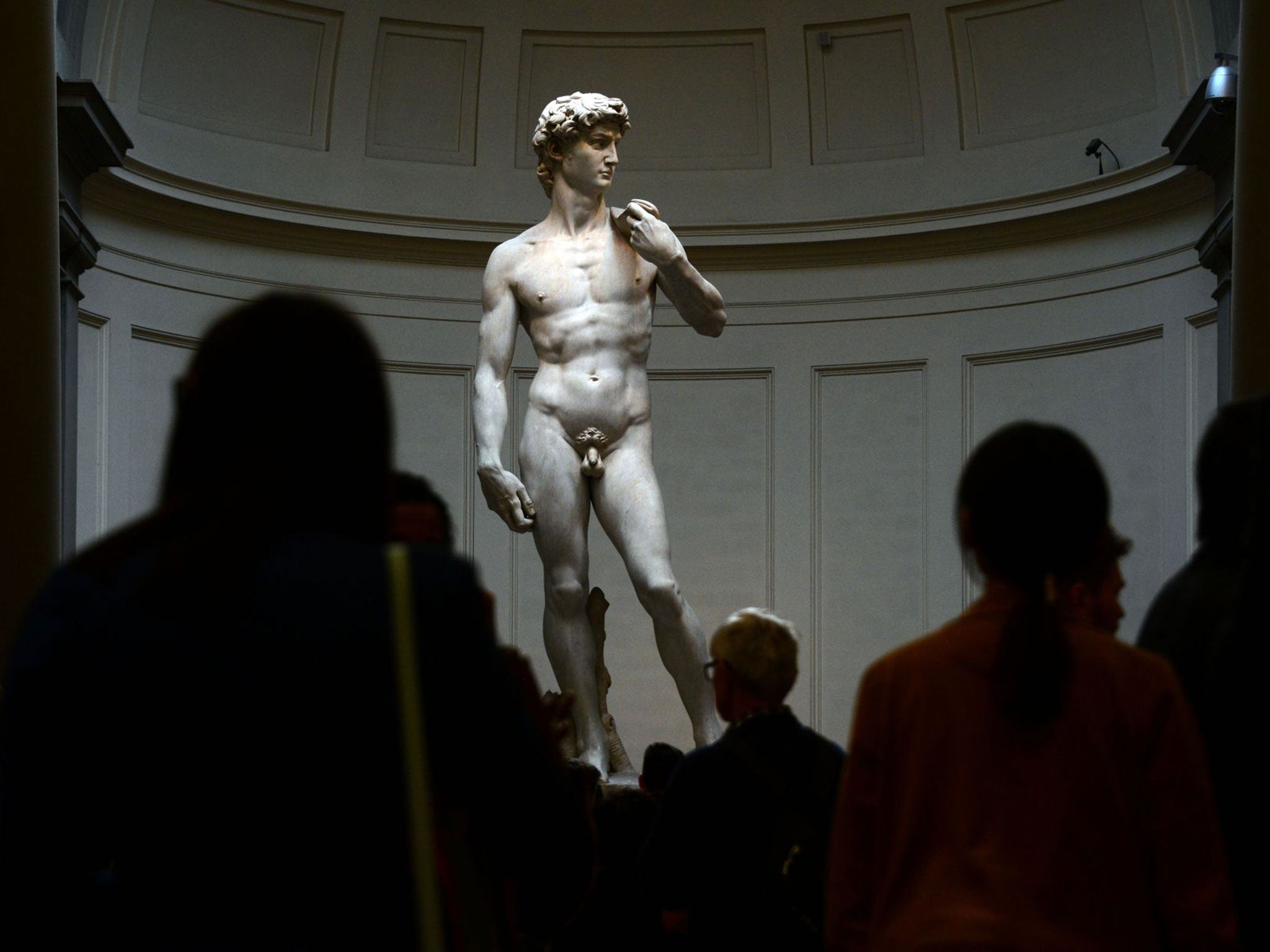Ana Prvacki: US artist pays homage to greats by creating shadows of their work
The price of the works she is displaying in an Los Angeles gallery suggest you can make good money in the shadows

Ana Prvacki is living in the shade of other, more famous artists. But if the price of the works she is displaying in a Los Angeles gallery are any guide, there is good money to be made in the shadows.
The 39-year-old has taken homage to a new level by exhibiting works based on the shadows cast by a series of well-known sculptures. Visitors to the 1301PE gallery can play a game of “name that shadow” with Jeff Koons’s Rabbit, Marcel Duchamp’s Bicycle Wheel and Michelangelo’s David creating some of the most familiar outlines.
Each of the new works costs only one per cent of the original sculpture’s current market price, but it’s a formula that makes for some eye-watering prices.
Michaelangelo’s original David is generally considered priceless, but Ms Prvacki has valued the sculpture’s shadow at a cool $1m (£700,000). The shadow of Koons’s metallic bunny is up for $600,000, and the shadow of Marcel Duchamp’s bicycle wheel mounted on a kitchen stool can be yours for a relatively modest $16,000. None of the works has been sold so far.
The price of her work, says Prvacki, is both a critique of the art market and the clique of wealthy collectors who force up the value of well known pieces.

“The one per cent, the pricing that I came up with 10 years ago, I didn’t think that 10 years later there would be such incredible economic inequality, that there would be this [wealthy] one per cent, or that the art market or the art world would be dominated by the one per cent,” she said.
Ms Prvacki is adamant her shadows do not infringe copyright laws. “We have spoken to copyright lawyers … we haven’t had any issues,” the LA-based artist said. “No one owns the shadows, not even Peter Pan. No one can stop you from making art. I’m not doing anything criminal.”
Ms Prvacki has been hand-drawing and then digitally enhancing the shadows of other artists’ masterpieces for almost a decade, but the Stealing Shadows exhibition, which opened in the Wilshire Boulevard gallery last week, is the first time they have appeared outside the pages of a book.
Speaking about her inspiration, she said: “You have the idea of being in the shadow of a great artist. I just started thinking about shadows … so then I thought why not just steal the shadow?”
The gallery’s founder, Brian Butler, said there has been a lot of interest from collectors, and said a museum is eyeing up two of the pieces, while Nicolas de Oliveira, an art consultant with consultants Montabonel & Partners, said the idea of finding inspiration in the work of others was an integral part of art.

“I think that art has certainly been quotational ... of other artworks, certainly since Duchamp,” he said. “The idea that we make something that is entirely new doesn’t really exist.
“Certainly, I think [Prvacki’s work] is definitely cheeky; that’s the refreshing part. You can’t really trademark a form.”
Still, some purists may deem Ms Prvacki’s work unoriginal. “Well, yes, I am stealing the shadows. I can’t claim anything else,” she said. “No one else thought of stealing the shadows of masterpieces before, so in that sense it is also original.”
Join our commenting forum
Join thought-provoking conversations, follow other Independent readers and see their replies
Comments